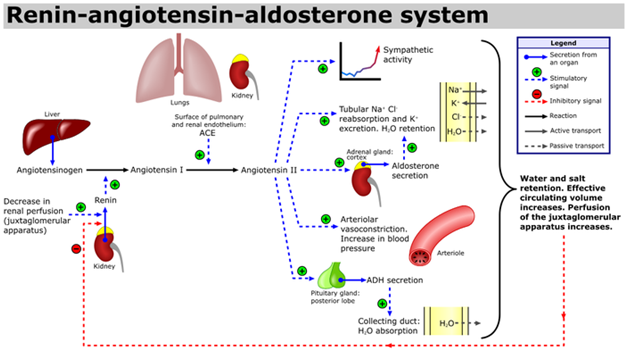Reference no: EM13673238
Case study #1.
Cardiac Contractility, dysfunction and pharmacology of cardiac contractility
AW, a 69-year-old female with known systolic dysfunction and heart failure, is admitted to the hospital with shortness of breath and nausea.
The patient's cardiac history is notable for previous myocardial infarction, which occurred1.5 years ago.
Since her myocardial infarction the patient has had significant limitation of her exercise capacity.
Physical examination in the emergency department is notable for a blood pressure of 85/50 mmHg and an irregular heart rate of 124 beats/min.
An electrocardiogram indicates that the underlying cardiac rhythm is atrial fibrillation.
A two dimensional echocardiogram is notable for a left ventricle (LV) ejection fraction (EF) of 25% (normal > 55%) and moderate mitral valve regurgitation.
AW has been treated with aspirin, carvedilol (a beta-antagonist), captopril (an angiotensin converting enzyme inhibitor), digoxin (a cardiac glycoside), furosemide (a loop diuretic), and spironolactone (an aldosterone receptor antagonist). For heart rhythm control she also had an automatic internal cardioverter-defibrillator (ICD) implanted one year ago to prevent sustained ventricular arrhythmia and sudden death.
He is started on amiodarone (a class III anti-arrhythmic), and the heart rate decreases to approximately 80 beats/min.
Laboratory testsperformed in ED show serum Na+ 146 mEq/L (normal, 135-145), BUN 42mg/dl (normal 7-19), K+ 2.9 mEq/L (normal 3.5-5.1), and creatinine 3.8 mg/dL (normal 0.6-1.2).The serum digoxin level is 3.2 ng/mL (therapeutic concentration typically ~ 1 ng/mL).
Based on these findings, AW is admitted to the cardiology intensive care unit. Her oral digoxin dose is held, and she is given intravenous KCl to increase her serum potassium concentration. Based on the severity of her clinical condition, a pulmonary artery catheter is placed to monitor cardiac pressures.
AW is also started on dobutamine(as intravenous infusion) and hercarvedilol is held. After initiation of dobutamine, AW has increased urine output and begins to feel symptomatically improved. She is monitored for 6 days, and her digoxin level decreases to the therapeutic range.
QUESTIONS:
Part I.
Answer the following based on AW case:
1. List the factors that affected pt. AW cardiac contractility and performance.
2. List the factors that initiated her sympathetic NS response. How has it changed the following?
3. Explain how Starling's Law helped to increase contractility in pt. AW case.
4. Construct an algorithm in order to explain how the changes in her CO affected her arterial blood pressure? You can use all information and diagrams available to you.
Part 2.
1. Why was AW diagnosed with systolic HF?
2. What findings confirm cardiac contractile dysfunction?
3. What is a difference between systolic and diastolic heart failure (HF)?
4. How does this cardiac contractile dysfunction affect patient's cardiac output (CO)?
5. Is preload affected in patients with systolic HF?
6. Is afterload affected in patients with systolic HF?
7. Is force of contraction affected in patients with systolic HF?
8. What changes will occur in patient's lungs if she will continue to have a significantly reduced cardiac output?
9. Does patient AW have systolic or diastolic dysfunction or both?
10. Identify the medications that would increase patient's cardiac output and force of cardiac contraction.
11. Compare the effect of pharmacotherapy by using different categories of medications.
12. Using a diagram (Normal vs Failing myocardium) explain the role of intracellular Ca++.
13. Explain Ca++ role in regards of contractility and relaxation of cardiac muscle.
14. Summarize Neurohormonal and RAAS Effects of HF.
